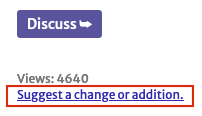Posters! Sessions! Meetings! The upcoming AAS meeting in Kissimmee, Florida is shaping up to be the busiest ever! Here are the formal meeting activities the ASCL is participating in.
Special Session: Tools and Tips for Better Software (aka Pain Reduction for Code Authors)
Tuesday, January 05, 2:00 PM – 3:30 PM; Sanibel
Organizers: Astrophysics Source Code Library (ASCL)/Moore-Sloan Data Science Environment at NYU
Research in astronomy is increasingly dependent on software methods and astronomers are increasingly called upon to write, collaborate on, release, and archive research quality software, but how can these be more easily accomplished? Building on comments and questions from previous AAS special sessions, this session, organized by the Astrophysics Source Code Library (ASCL) and the Moore-Sloan Data Science Environment at NYU, explores methods for improving software by using available tools and best practices to ease the burden and increase the reward of doing so. With version control software such as git and svn and companion online sites such as GitHub and Bitbucket, documentation generators such as Doxygen and Sphinx, and Travis CI, Intern, and Jenkins available to aid in testing software, it is now far easier to write, document and test code. Presentations cover best practices, tools, and tips for managing the life cycle of software, testing software and creating documentation, managing releases, and easing software production and sharing. After the presentations, the floor will be open for discussion and questions.
The topics and panelists are:
Source code management with version control software, Kenza S. Arraki
Software testing, Adrian M. Price-Whelan
The importance of documenting code, and how you might make yourself do it, Erik J. Tollerud
Best practices for code release, G. Bruce Berriman
Community building and its impact on sustainable scientific software, Matthew Turk
What to do with a dead research code, Robert J. Nemiroff
Poster 247.07: Astronomy education and the Astrophysics Source Code Library
Wednesday, January 06, Exhibit Hall A
The Astrophysics Source Code Library (ASCL) is an online registry of source codes used in refereed astrophysics research. It currently lists nearly 1,200 codes and covers all aspects of computational astrophysics. How can this resource be of use to educators and to the graduate students they mentor? The ASCL serves as a discovery tool for codes that can be used for one’s own research. Graduate students can also investigate existing codes to see how common astronomical problems are approached numerically in practice, and use these codes as benchmarks for their own solutions to these problems. Further, they can deepen their knowledge of software practices and techniques through examination of others’ codes.
Poster 348.01: Making your code citable with the Astrophysics Source Code Library
Thursday, January 07, Exhibit Hall A
The Astrophysics Source Code Library (ASCL, ascl.net) is a free online registry of codes used in astronomy research. With nearly 1,200 codes, it is the largest indexed resource for astronomy codes in existence. Established in 1999, it offers software authors a path to citation of their research codes even without publication of a paper describing the software, and offers scientists a way to find codes used in refereed publications, thus improving the transparency of the research. Citations using ASCL IDs are accepted by major astronomy journals and if formatted properly are tracked by ADS and other indexing services. The number of citations to ASCL entries increased sharply from 110 citations in January 2014 to 456 citations in September 2015. The percentage of code entries in ASCL that were cited at least once rose from 7.5% in January 2014 to 17.4% in September 2015. The ASCL’s mid-2014 infrastructure upgrade added an easy entry submission form, more flexible browsing, search capabilities, and an RSS feeder for updates. A Changes/Additions form added this past fall lets authors submit links for papers that use their codes for addition to the ASCL entry even if those papers don’t formally cite the codes, thus increasing the transparency of that research and capturing the value of their software to the community.


